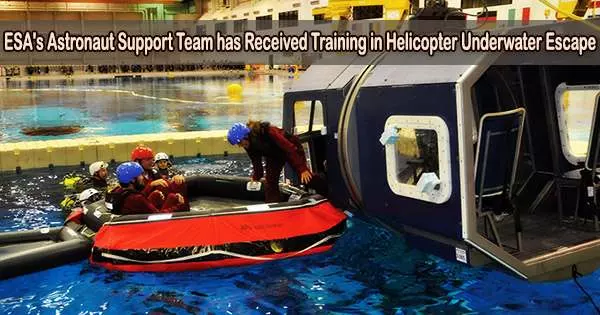Members of the ESA astronaut support crews practiced helicopter underwater escapes last week. All participants in astronaut landing operations, including flight surgeons and photographers who document the most important moments of an astronaut mission, must complete this training.
Splashdowns following a space flight off the coast of Florida have become commonplace as a result of European astronauts now taking off and landing from NASA’s Kennedy Space Center in Florida. Since ESA staff are present during the launch and splashdown of European astronauts, they must also receive training in water and helicopter rescue.
The program, which was specially designed for the needs of ESA, was presented for the first time in Europe in Rotterdam, Netherlands. The seminar covered helicopter flight techniques and made sure the crew was ready for any situations.
Dry and wet
The course lasts for a full day, divided into theoretical and practical components. Students learn protocols, what to do during a helicopter ditching, and how to use compressed air emergency breathing devices throughout a half-day in the classroom.
The practical portion of the underwater escape training, which intensifies after the initial introduction to the water, takes up the second half of the day. A model helicopter is gently lowered into the water for the first attempt, then on succeeding efforts, the speed is increased and even revolutions are added.
Participants receive training on further survival skills after escaping from a submerged helicopter, including as boarding a life raft and reducing the risk of hypothermia.
A successful certification for helicopter emergency water landings is valid for two years.
Ready for splashdown
Later this summer, Andreas Mogensen’s launch and landing for the Huginn mission will serve as the ESA team’s subsequent helicopter mission.
A flight surgeon and the head of astronaut operations, Alexander Gerst, an ESA astronaut, are ready to launch a helicopter rescue mission in the event of a launch abort. Two helicopters monitor activities and offer emergency help during a spacecraft splashdown.
Up to 14 people, including astronauts and medical support staff, can fit in one helicopter that delivers astronauts from the rescue ship back to shore. A second helicopter transports photographers, crew support staff, and representatives of the space agency.
















